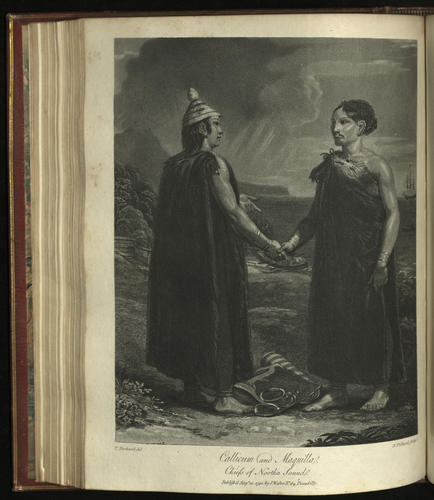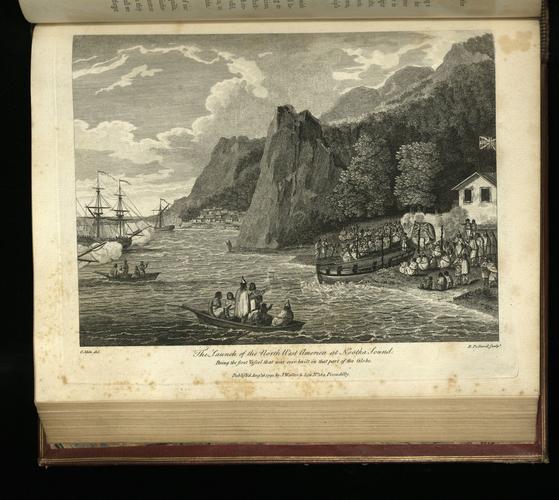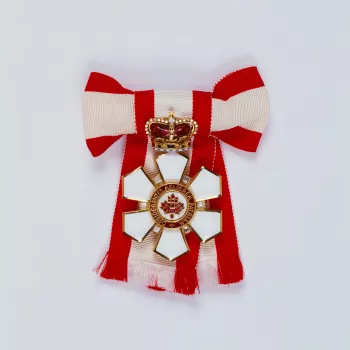Voyages made in the years 1788 and 1789 from China to the North-West coast of America 1790
RCIN 1124465

John Meares (c. 1756-1809)
Voyages made in the years 1788 and 1789 from China to the North-West coast of America : to which are prefixed, an introductory narrative of a voyage performed in 1786, from Bengal, in the ship Nootka. 1790

John Meares (c. 1756-1809)
Voyages made in the years 1788 and 1789 from China to the North-West coast of America : to which are prefixed, an introductory narrative of a voyage performed in 1786, from Bengal, in the ship Nootka. 1790



-
John Meares (c. 1756-1809) was a British fur trader who sought to profit from the discovery of an abundant population of sea otters on the Pacific north-west coast of North America. Sea otter pelts were acquired cheaply in America and sold for much higher prices in China, where they were made into luxury goods, and Meares, along with fellow traders such as Nathaniel Portlock, James Colnett and George Dixon, believed that the development of this industry would be a great commercial boon to British trade.
The epicentre of this enterprise was the Nootka Sound, an excellent anchorage point on the west coast of Vancouver Island (in present-day British Columbia), surveyed by Captain Cook in the 1770s. In the years following Cook's expedition, British, Spanish and Russian traders all attempted to establish settlements in the area. The vicinity of the Nootka Sound is the ancestral home of two groups of Nuu-Chah-Nulth peoples (now united as the Mowachaht-Muchalaht First Nations), who know the sound as Mowichat.
In 1786, Meares outfitted an expedition to Alaska with the ships Nootka and Sea Otter. This ended in failure and two years later he made another expedition, to establish a permanent settlement in Nootka Sound. This resulted in the launch of the first European ship in the Pacific Northwest, the sloop North West America, at Yuquot or Friendly Cove, a summer settlement of the Mowachaht, in September 1788.
Meares' and other traders' activities were opposed by the Spanish, who sent their own vessels to establish control of the area, and in 1789, British fur traders were captured by Spanish ships, leading to an international dispute known as the Nootka Crisis. Spain was unable to uphold the claims without French support (the French Revolution having begun that summer) and after a series of negotiations between 1791 and 1792, hosted by the Mowachaht leader Maquinna ('possessor of pebbles'), both sides agreed not to permanently settle in the area.
During the negotiations the British and Spanish representatives, George Vancouver and Juan Francisco de la Bodega y Quadra, were warmly welcomed by Maquinna, who held a series of dances and ceremonies similar to the traditional gift-giving ceremony or potlatch, to mark the occasion. The resolution of the crisis allowed the Mowachaht to reestablish the settlement at Yuquot that they had previously been forced to abandon.
There was much interest in Europe of the events surrounding the crisis so Meares published his own accounts of his adventures in the Pacific. This is George IV's subscription copy, printed in 1790. It describes the events of Meares' voyage to Alaska; his assertions of the existence of the Northwest Passage; the Nootka Crisis; a description of the fur trade; the trading relationship between Britain and China and an account of Mowachaht customs.Provenance
Subscription copy, acquired by George IV when Prince of Wales, c. 1790
-
Creator(s)
(bookseller)Acquirer(s)
-
Alternative title(s)
Voyages made in the years 1788 and 1789 from China to the North-West coast of America : to which are prefixed, an introductory narrative of a voyage performed in 1786, from Bengal, in the ship Nootka... / by John Meares.
Voyages made in the years 1788 and 1789 from China to the North-West coast of America : to which are prefixed, an introductory narrative of a voyage performed in 1786, from Bengal, in the ship Nootka ; observations on the probable existence of a north west passage ; some account of the trade between the north west coast of America and China ; and the latter country and Great Britain / by John Meares Esq.
London : Printed at the Logographic Press ; and sold by J Walter, no 169, Piccadilly, opposite Old Bond Street. MDCCXC [1790].








